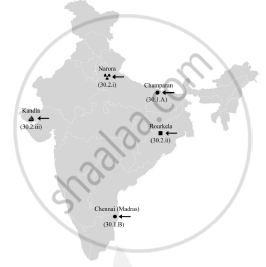Advertisements
Advertisements
Question
Two features A and B are marked in the political outline map of India given below. Identify these features with the help of the following information and write their correct names on the lines marked in the map:
A. The place where the Indian National Congress Session was held in 1927.
B. The place which is associated with the movement of Indigo Planters.
Solution

RELATED QUESTIONS
Explain any five major problems posed by the First World War in India.
“The plantation workers in Assam had their own understanding of Mahatma Gandhi and the notion of Swaraj”. Support the statement with arguments.
How did different social groups conceive the idea of 'Non-Cooperation'? Explain with examples.
In which one of the following places Mahatma Gandhi organised Satyagraha for the first time in India?
Describe any three suppressive measures taken by the British administration to clampdown on nationalists.
Why did Mahatma Gandhiji decide to withdraw the Non-Cooperation Movement in February 1922? Explain the reasons.
Explain Why Indians were outraged by the Rowlatt Act.
Identify these features with the help of the following information and write their correct names on the lines marked near them.
- The place where the Indian National Congress Session was held.
- The city where the Jallianwalla Bagh incident took place.
Answer the following question.
How did the Non-Cooperation movement start with the participation of middle-class people in the cities? Explain its impact on the economic front.
Why did Gandhiji decide to withdraw the 'Non-Cooperation Movement' in February 1922? Explain any three reasons.
